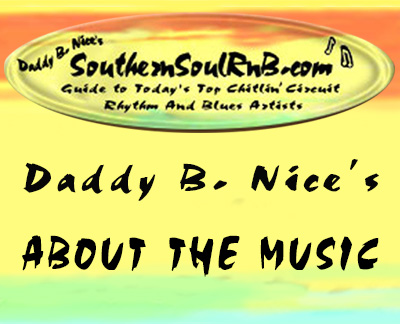

Southern Soul
Everyone knows the story of how—back in the fifties and sixties—a few teenagers (Elvis, Buddy, John & Paul, Mick & Keith) discovered an entire generation of overlooked blues and soul musicians and forged their first crude efforts (rock and roll) using the black music template. Now, a half-century later, those pioneering black artists are legends, their names synonymous with rhythm and blues, their artistic achievements recognized and embraced around the world.
The fact, largely overlooked, is that a new generation of rhythm and blues artists (Peggy Scott-Adams, Willie Clayton, Shirley Brown, the late Mel Waiters and Marvin Sease, Bobby Rush, Denise LaSalle, Theodis Ealey) has labored and matured in near-total obscurity even as the genre’s “young guns (Sir Charles Jones, T. K. Soul, O.B. Buchana, Sheba Potts-Wright, Nelllie “Tiger” Travis, The Love Doctor, the late Jackie Neal, Vick Allen, Jeff Floyd, Bigg Robb, Ms. Jody) and their even younger cohorts (L.J. Echols, J’Wonn, Tucka, Big Pokey Bear, LaMorris Williams, Cupid), are at this moment “blossoming” while being denied national airplay and marginalized as “chitlin’ circuit” music.
Because only one in a thousand fans has access to—or knowledge about—the Deep South radio stations that play Southern Soul music, the average music fan thinks that today’s black musician either raps or plies “smooth jazz.” Yet there exists today a hidden cache of stellar tunes—a quarter-century of overlooked material–that compares favorably with the R&B and blues classics of yesteryear.
Southern Soul music–with its own stars, its own audience and day-to-day hits–is the resurgence of that verse-and-chorus, story-telling tradition. Southern Soul descends from the classic R&B of the sixties. In addition to Motown, Memphis, Philly and Chicago-style rhythm and blues, Southern Soul borrows freely from country, gospel, rock, pop and many other influences. It is not simply the “blues,” with which it is often confused, and which traces its roots through a decidedly narrower, less danceable, lineage. But you won’t find today’s Southern Soul performers in “Billboard,” unless someone is fortunate enough to break through on the blues chart. Sadly, Brook Benton’s “Rainy Night In Georgia” and Al Green’s “Let’s Stay Together” were among the last mainstream Southern Soul hits.
Daddy B. Nice has criss-crossed the Delta for years, researching music out of little motels in hamlets and cities. He has thoroughly absorbed the South’s sultry air and table-flat vistas, its kudzu-festooned fairylands of trees and telephone wires, the shotgun houses and roadside stands, the pink lawn flamingoes and bathtub grottoes, the brown drinking water and sugared iced tea, the holes-in-the-wall, the cotton-flecked roadsides, the beer-tub-beside-the-cash-register gas stations and convenience stores, and even the flip-flop-loose Mississippi accent in which a name like Lee “Shot” Williams (another overlooked Southern Soul artist) is pronounced “Leeee-shaaaaaddd”.
The result of his passion for the music is a small library of rare information on the still underground Southern Soul phenomenon. Whether you’re a potential fan or a longtime insider, you’ll find lots of content and perspective on the top songsand the major artists coming out of contemporary chitlin’ circuit rhythm and blues.
